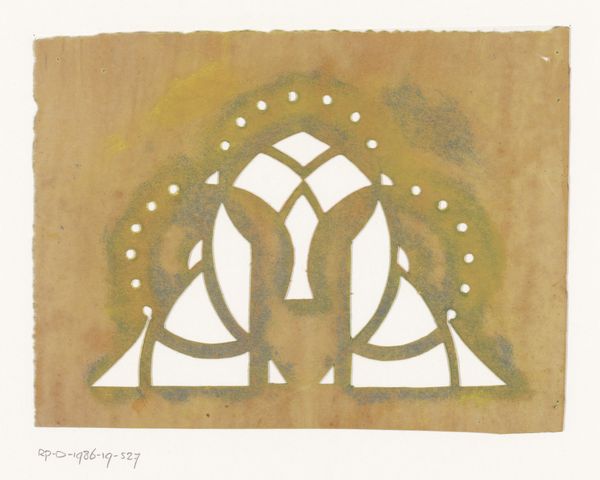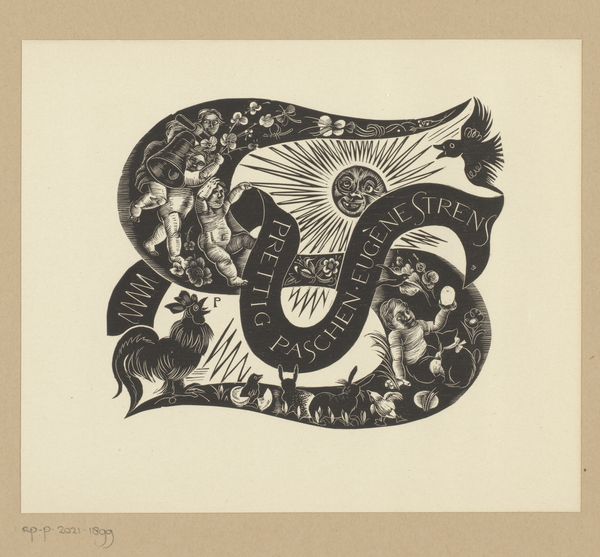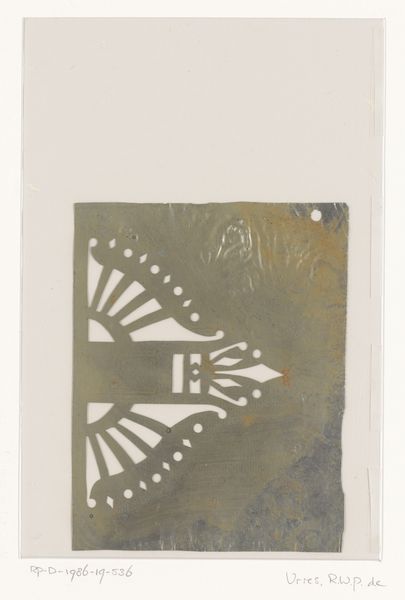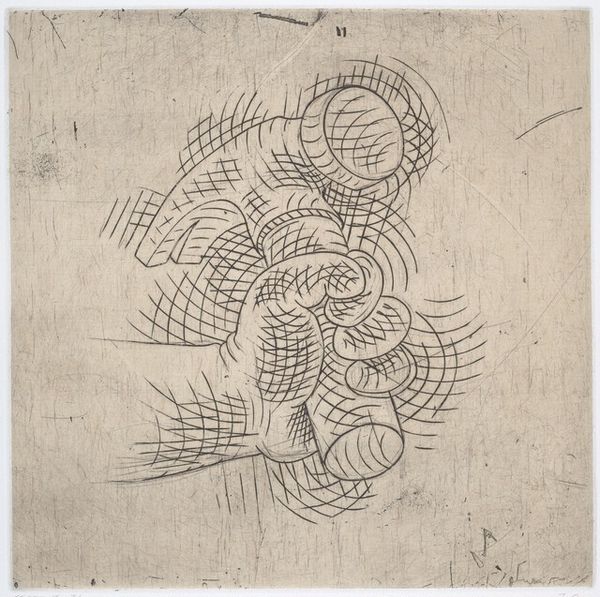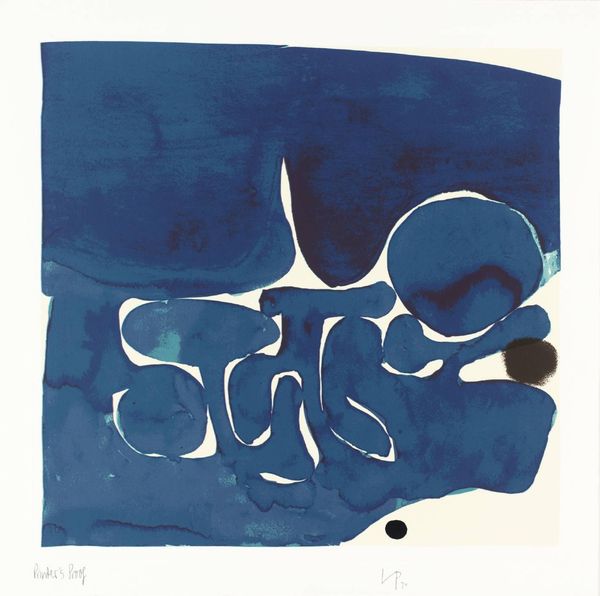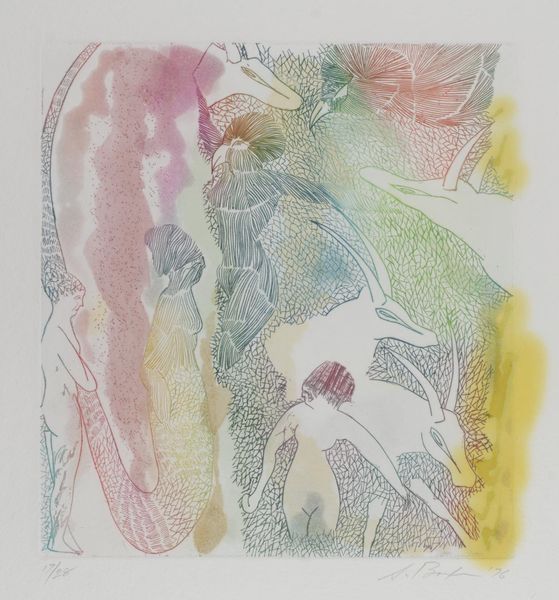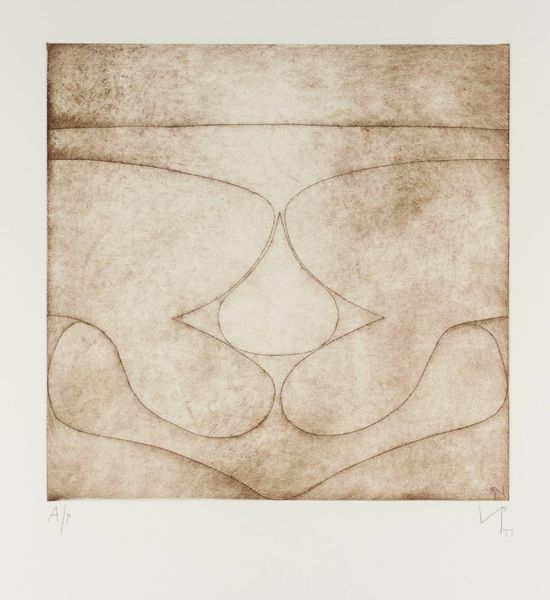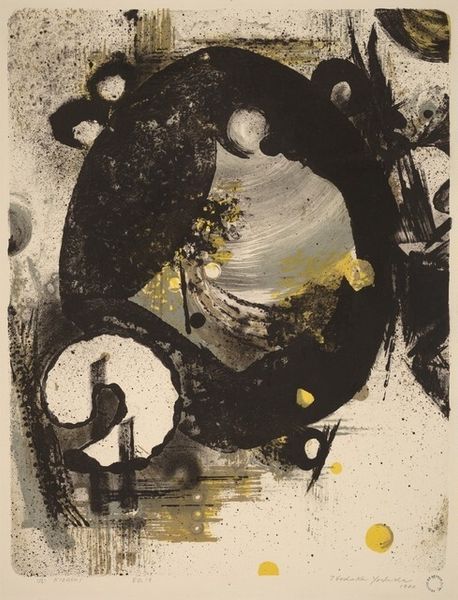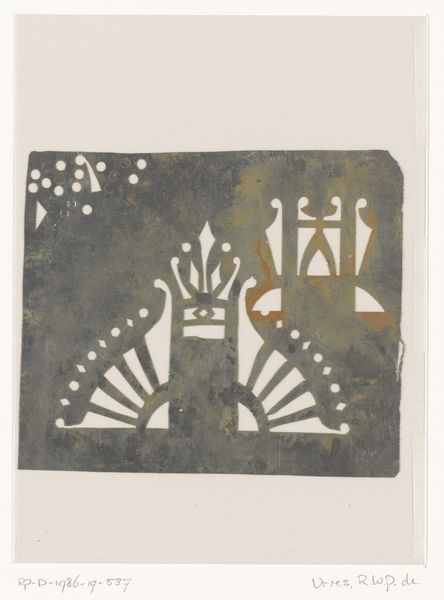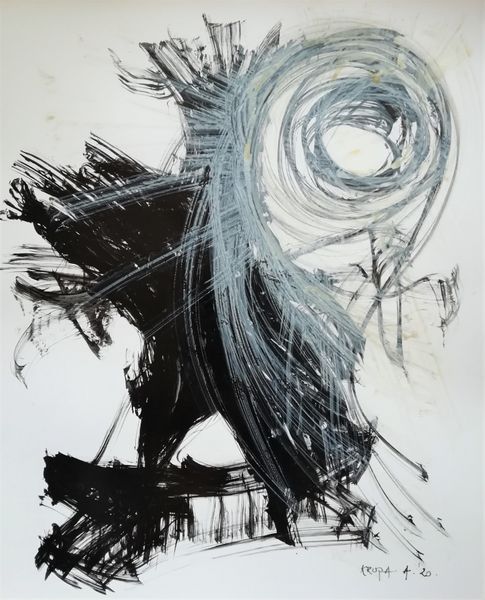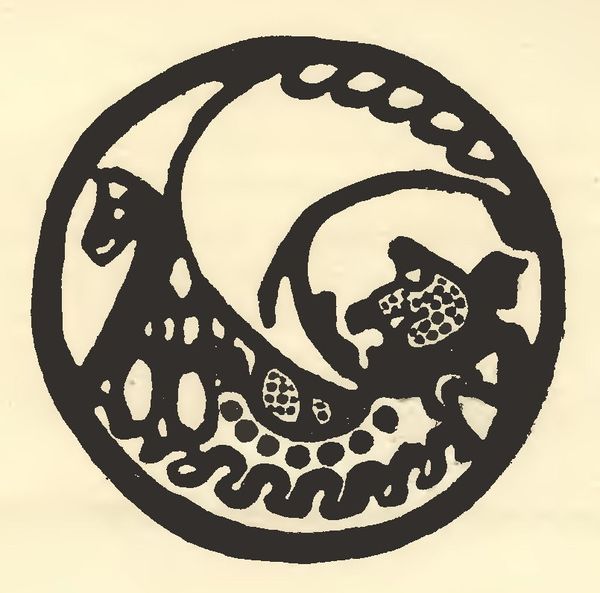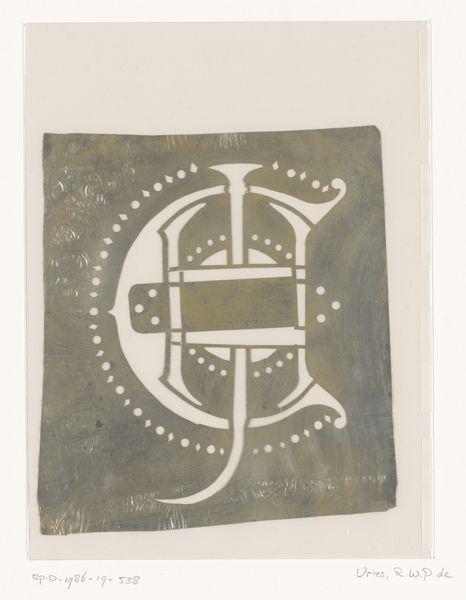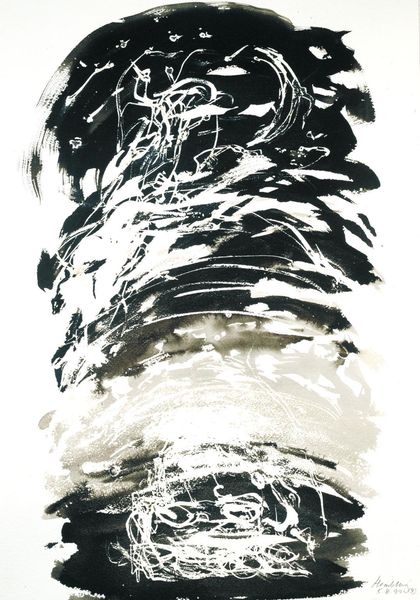
print, linocut
#
toned paper
# print
#
linocut
#
figuration
#
linocut print
#
geometric
Dimensions: height 108 mm, width 116 mm
Copyright: Rijks Museum: Open Domain
Editor: This is Reinier Willem Petrus de Vries's linocut print from between 1884 and 1952, "Sjabloon met zeepaardje," which translates to "Stencil with Seahorse". I’m struck by its geometric feel – it's almost like a spiral fossil. What stands out to you in terms of its symbolic meaning? Curator: It's fascinating how the artist has taken this marine creature and reduced it to such a basic geometric form. Seahorses themselves carry considerable weight in symbolism. In some cultures, they represent patience, contentment, and protection. Do you see how that spiraling shape might also evoke cyclical patterns, a continuous return, or even the unfolding of life itself? Editor: Yes, I hadn't thought about that! The spiral gives the impression of growth and constant change, a sharp contrast to the animal's hardiness. It almost makes it appear like the seahorse contains all of the ocean within it. Curator: Exactly. Now, consider the printmaking process itself. Linocut often involves a degree of simplification. How might the choice of this medium influence the message, perhaps pointing to accessibility or wider distribution of the image and its symbolic resonance? Does that choice inform our understanding of cultural memory and the preservation of certain themes? Editor: That’s a good point. It becomes less precious, perhaps more widespread in its meaning. A simple image for a broad audience to contemplate deeper concepts? Curator: Precisely. It makes you wonder where it was used and who was the audience. We need to remember art never exists in isolation. Editor: I’m walking away from this conversation contemplating just how much hidden meaning can be in such a stylized form! Thanks. Curator: My pleasure, it is fascinating what cultural memory we have projected upon that creature, isn’t it?
Comments
No comments
Be the first to comment and join the conversation on the ultimate creative platform.
